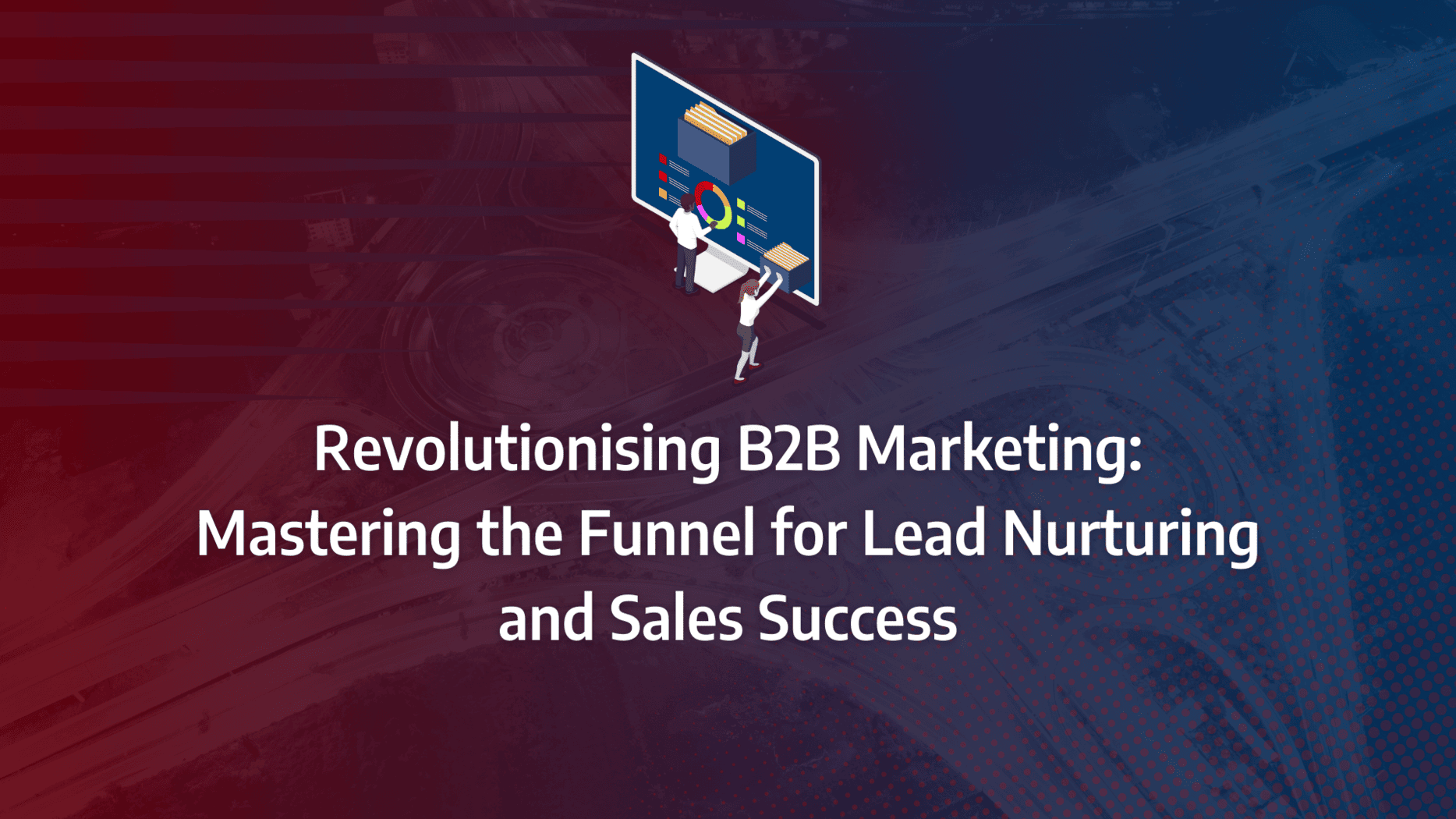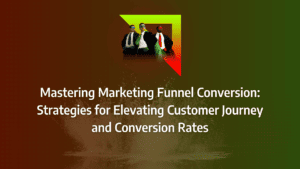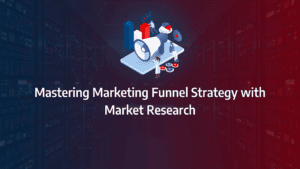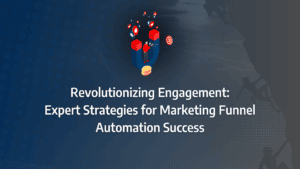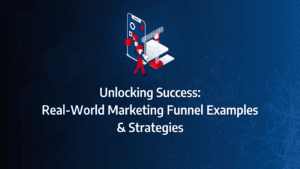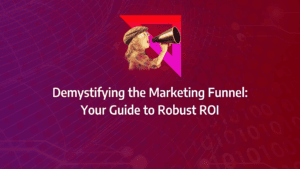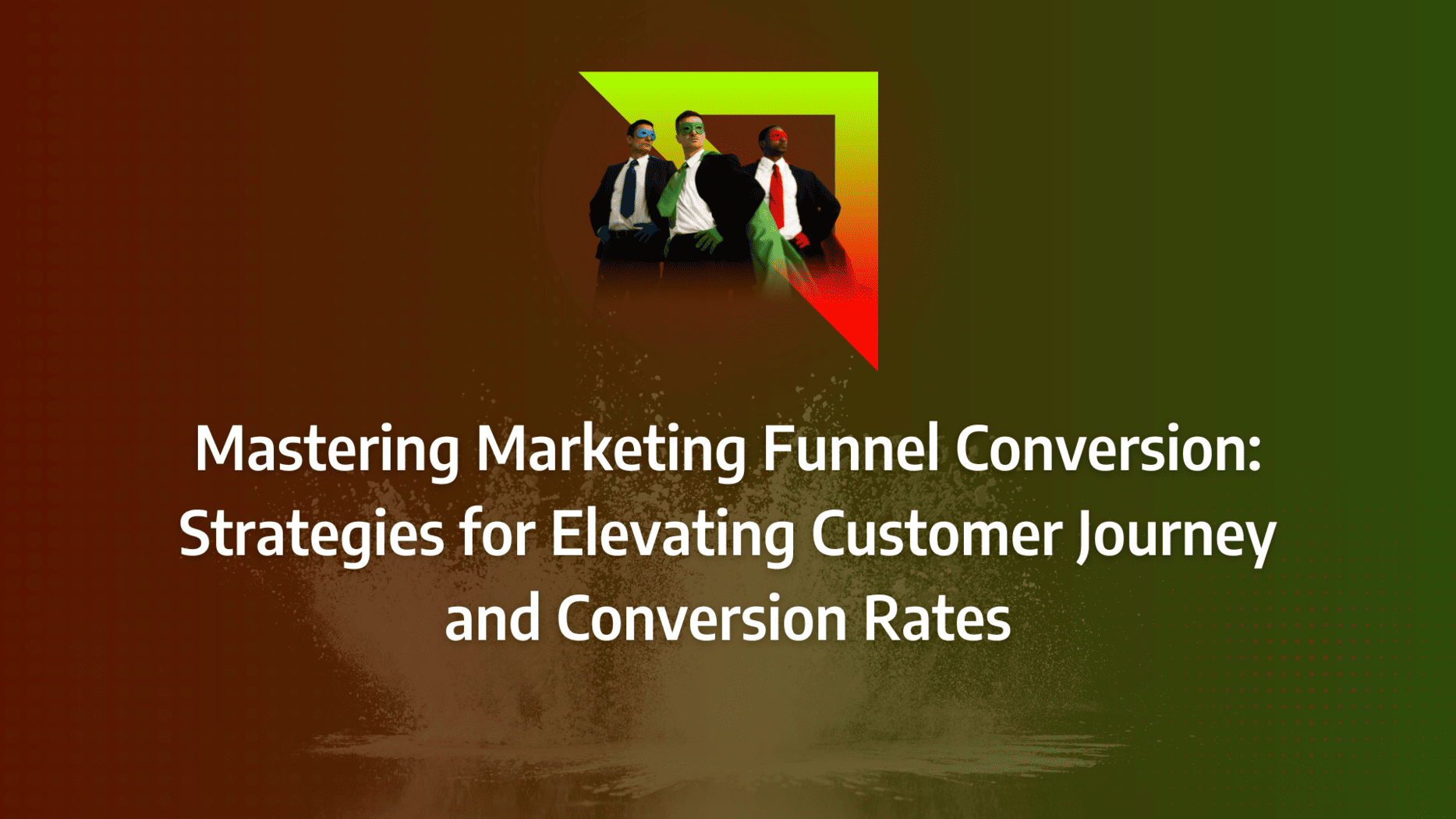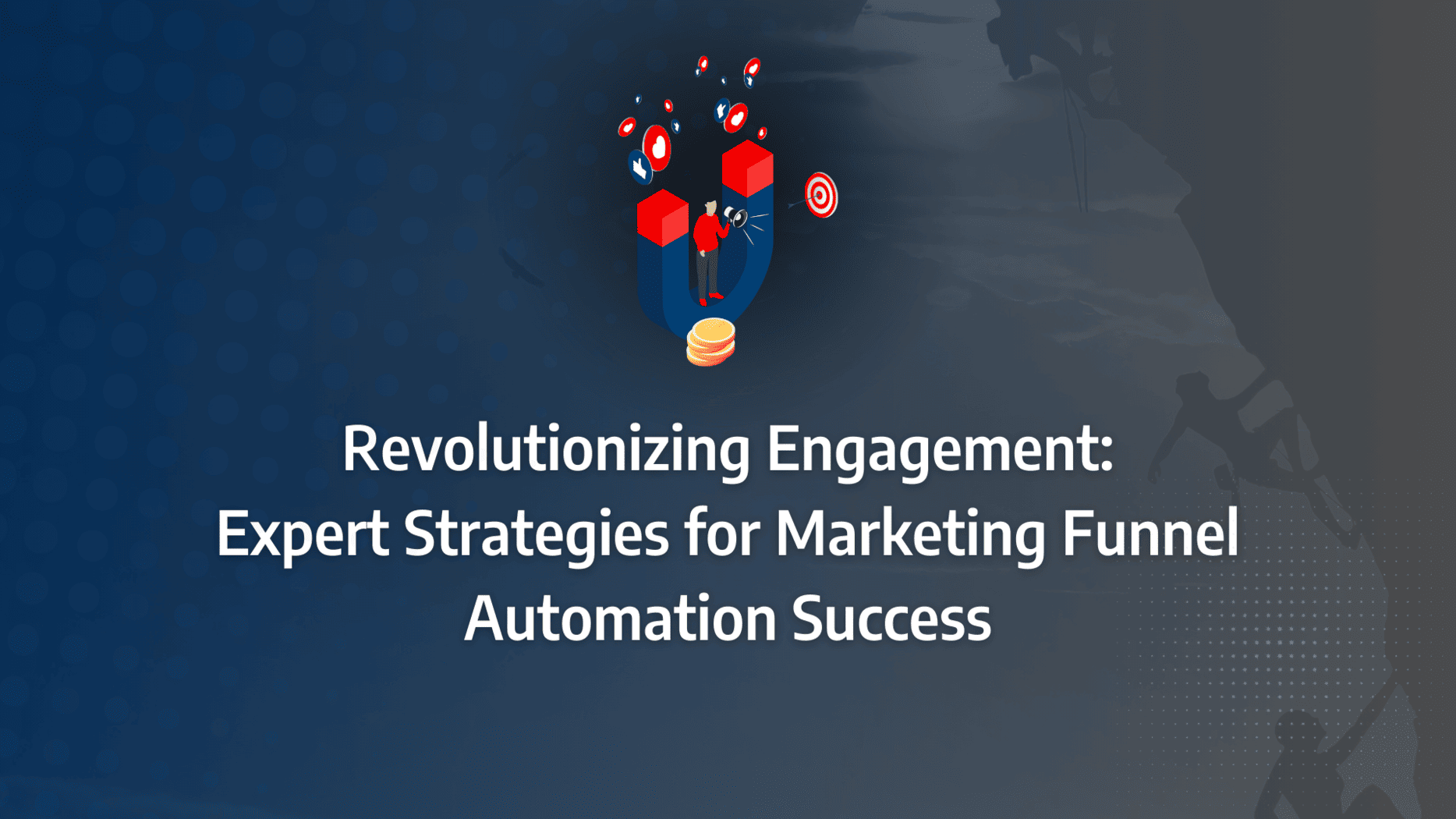Each stage of the marketing funnel presents its own challenges, from capturing initial interest to guiding prospects through to a final sale. If your leads are slipping through the cracks or your sales and marketing teams aren’t aligned, your funnel might not be functioning at its full potential. But don’t worry—there’s a clear path to success.
This guide will walk you through the essential steps to revolutionise your B2B marketing funnel. Whether you’re looking to refine your lead nurturing tactics, integrate cutting-edge technology, or align your sales and marketing efforts, this comprehensive guide offers practical strategies you can implement today.
- Understand the stages of the B2B marketing funnel to optimise lead nurturing and increase conversions.
- Align sales and marketing teams to ensure a seamless transition of leads through the funnel.
- Implement personalised lead nurturing strategies to engage prospects at each stage of the funnel.
- Utilise technology and automation tools to streamline the B2B marketing funnel and enhance efficiency.
- Monitor key metrics at each funnel stage to make data-driven decisions and improve overall performance.
- Overcome common challenges in B2B marketing funnel management with practical, actionable solutions.
What are the key stages in a typical B2B sales cycle?
The B2B sales process is fundamentally different from its B2C counterpart and necessitates a meticulously crafted sales strategy. This process typically encompasses a variety of sales techniques tailored to diverse buyer personas and selling scenarios. While the specific stages in a B2B sales process can vary by company and industry, it generally follows a five- to eight-stage cycle.
What Matters Most?
Leveraging content marketing throughout the B2B marketing funnel is essential for effectively guiding prospects and boosting conversion rates. From our experience, clients often discover that tailored content not only engages but informs, leading to more meaningful interactions. Additionally, understanding your audience’s journey by mapping out their touchpoints enables timely messaging that resonates, which typically results in improved engagement and more effective lead nurturing. Prioritising customer experience at every stage fosters client retention and encourages advocacy, a strategy that clients frequently find enhances loyalty and drives referrals.Get In Touch
Here’s a breakdown of a typical seven-stage B2B sales cycle:
- Prospecting At the initial stage, the focus is on identifying a target consumer base that aligns with the brand’s buyer personas. This involves creating a list of potential consumers who are then filtered and advanced through the stages of the B2B marketing funnel.
- Qualifying Leads Reaching the right prospects and filling the pipeline with quality leads is crucial. Given the vast number of potential leads, only a fraction will be truly qualified. When qualifying leads, consider criteria such as:
- Does the lead have the financial capacity to afford your solution?
- Does the lead possess the authority to approve the purchase?
- Is the lead aware of the need for a solution to their problem?
- Pitching the Solution Initial contact is made with the lead to ascertain their interest in making a purchase. This stage involves discussing the requirements of the sale, helping the customer determine if the product or service meets their needs. Utilising a CRM at this point can be beneficial as it integrates the company’s calendar and emails.
- Product Demo or Sales Pitch This stage is pivotal for communicating the value of your solutions in terms of the prospect’s needs. Effective communication hinges on connecting the customer’s needs with the features and benefits of the product. A clear understanding of the previous discussions is critical here.
- Sending Proposal Once the client’s needs are clearly understood, a proposal can be sent. This stage differentiates general prospects from those ready to make a purchase. It is essential to set timelines and reminders to follow up with the client within a reasonable timeframe.
- Negotiation It’s uncommon for a proposal to be accepted without negotiation. Prospects often have questions or objections that need to be addressed. Focus on highlighting the features that offer the best value to the customer and demonstrating how your brand can help them achieve their goals.
- Closing After addressing all objections, the prospect decides whether to finalise the deal. The closing stage is where the sale is completed, and the client agrees on the terms and price. However, some deals may not go through, so it’s important to track these and follow up in the future.
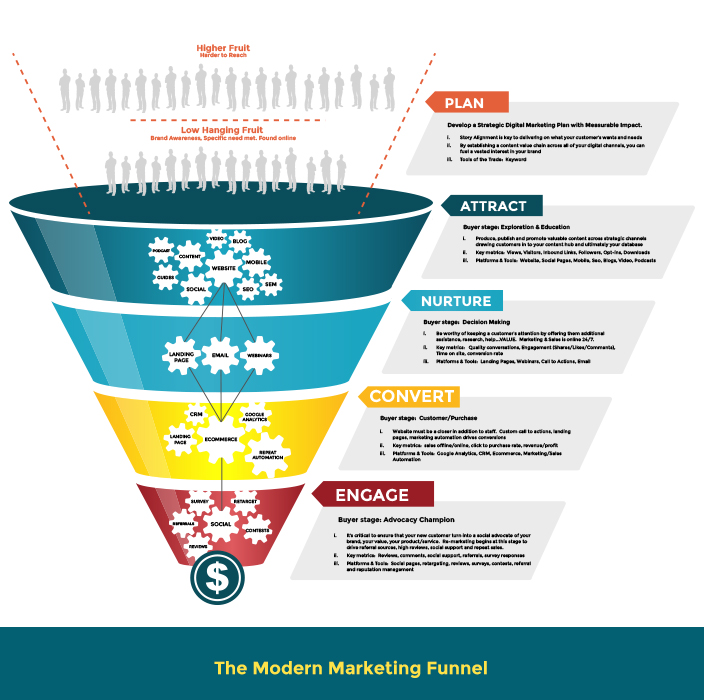
Source: Beintheknow
The Importance of a B2B Marketing Funnel
The B2B marketing funnel is a strategic tool used to track leads as they progress through the sales process, aligning marketing and sales targets, activities, and processes. It defines the customer journey from initial awareness of a product or service to the final purchase. The traditional marketing funnel has evolved to meet modern consumer behaviours, focusing on creating a unique experience from start to finish.
The top of the funnel aims to generate as many leads as possible, while the narrow bottom reflects the number of leads converted to customers by the end of the sales process. Despite the variability in stages, a traditional model typically includes awareness, interest, desire, and action. It’s important to note that a lead’s behaviour is rarely linear, making a well-defined funnel crucial for understanding and nurturing prospects effectively.
The B2B Marketing Funnel
In the world of B2B sales and marketing, the B2B marketing funnel is an essential framework used to track leads as they progress through the sales process. This funnel helps align marketing and sales targets, activities, and processes, effectively defining the customer journey from initial awareness to final purchase.
Traditionally, the marketing funnel was designed for a different era, and today’s consumer behaviours necessitate a more modern approach. Modern B2B marketing funnels focus on creating a unique experience for customers from start to finish, adapting to the complexities of the digital age.
Stages of the B2B Marketing Funnel
The top of the funnel aims to generate as many leads as possible, while the narrow bottom reflects the number of leads converted into customers by the end of the sales process. Although the stages can vary by brand or industry, a traditional model typically includes the following phases:
- Awareness
- At this stage, potential customers first become aware of your product or service.
- Interest
- Leads show interest by engaging with content or responding to marketing efforts.
- Desire
- Prospects develop a desire for your product or service, influenced by detailed information and value propositions.
- Action
- The final stage where the prospect decides to make a purchase.
It’s important to note that a lead’s behaviour is rarely simple or linear, often requiring personalised approaches to guide them through the funnel effectively.
Why is a B2B Marketing Funnel Still Important?
For over a century, marketing funnels have been pivotal in managing the sales process. At the top of the funnel, leads may not initially consider making a purchase but might be “qualified” based on their actions, such as registering for a webinar. As leads progress through the funnel, they become increasingly aware of your products and services through various interactions, including social media and other marketing materials. Their interest grows until they eventually convert into customers.
Building a well-defined sales funnel is crucial for understanding a prospect’s interest in your offerings. Tracking prospects through the funnel allows brands to determine how each lead should be approached, identifying the optimal products, services, or content to pitch at any given time. Correct timing is essential to avoid overwhelming leads with information or pushing for a sale too early, a practice often referred to as “nurturing.”
A lead’s position within the funnel helps shape the type and frequency of campaigns necessary to maintain their interest. This strategic nurturing ensures that leads receive the right message at the right time, maximising the chances of conversion.
What strategies can I use to improve my B2B marketing funnel?
Use Multiple Channels to Attract Leads: To enhance your B2B marketing funnel, it is essential to leverage a variety of marketing channels. Utilise a mix of pay-per-click (PPC) advertising, off-site SEO, direct mail campaigns, and cold calling. The effectiveness of these channels may fluctuate over time, so diversifying your marketing efforts ensures consistent lead generation.
Consistently Analyse the Effectiveness of Marketing Efforts: Regularly tracking and analysing your marketing campaigns is vital. This practice helps brands identify the most effective marketing channels, enabling informed decision-making. Utilising data analytics, you can refine strategies and optimise resource allocation.
Regularly Update the Content: Keeping your content fresh is crucial for SEO and customer engagement. Regularly updating blogs and other content not only improves search engine rankings but also keeps your audience engaged. Ensure that your content reflects the latest industry trends and addresses current customer needs.
Gain Customer Insights: Customer insights are invaluable for refining your marketing strategies. By understanding the questions and concerns of your leads and customers, you can create content that addresses their needs. For instance, if multiple customers inquire about a specific feature of your product, consider writing a detailed blog post on that topic. This approach not only addresses existing customers’ questions but also attracts new visitors with similar queries.
Strategically Use Call To Actions (CTAs): Effective CTAs are crucial for guiding prospects through the B2B marketing funnel. Recognise that website visitors are at different stages of their customer journey. Some may be ready to contact your sales team, while others are still researching. Offer a range of CTAs, such as free eBooks or whitepapers, to capture the contact information of those not yet ready to engage directly with your sales team.
Retarget Customers Who Did Not Convert the First Time: Retargeting is an effective strategy for engaging visitors who did not convert on their first visit. Implement retargeting campaigns to display targeted advertisements to these visitors, providing another opportunity to draw them back to your site. This method increases the chances of conversion by keeping your brand top-of-mind.
Nurture the Prospects: Nurturing leads is a critical component of the B2B marketing funnel. Once leads provide their contact information, it indicates a level of interest in your products. Although they might not be ready to purchase immediately, nurturing them with relevant content can help move them down the funnel. Consider using targeted email broadcasts or drip campaigns to maintain engagement and build trust over time.
Add a Referral Programme: Referral programmes are a powerful way to generate new leads. Encourage your existing customers to refer others by promoting your referral programme. Satisfied customers can be your best advocates, and a well-structured referral programme can significantly enhance your lead generation efforts.
Common B2B Marketing Funnel Challenges
1. Lack of a Clear Value Proposition
One of the most significant challenges in a B2B marketing funnel is the absence of a clear value proposition. It’s essential to immediately convey the benefits of your product or service to your audience, rather than focusing on features. Prospects need to understand how your solution addresses their specific problems. Each stage of the sales funnel should concentrate on one key message.
The click that brings prospects to your landing page indicates their interest. Your job is to demonstrate the value and benefits of your offering concisely and compellingly. This part of the funnel should be free from distractions like menus, pop-ups, or links to other pages. Its sole purpose is to engage visitors enough to move them to the next stage of the funnel.
2. Lack of Integration
Another common issue in the B2B marketing funnel is the lack of integration among different technological tools. To maximise data collection and provide an optimal customer experience, all your tech components must work seamlessly together. When integrating various tools with your CRM to manage your marketing funnels, ensure they are well-coordinated. Without smooth integration, a streamlined process can become disjointed, resulting in a poor customer experience and inefficient data management.
3. Lack of Social Proof
Social proof, such as customer reviews, testimonials, and case studies, is crucial for building trust and credibility. Without it, potential customers may hesitate to take the desired action. Incorporate social proof at various stages of your B2B marketing funnel to reassure and persuade prospects of your product’s value. Display customer testimonials prominently on your website, showcase positive reviews on social media, and highlight case studies that demonstrate successful use cases of your product or service. This approach helps alleviate doubts and significantly boosts conversion rates.
Our Tactical Recommendations
Integrating social selling into your funnel strategy is crucial for driving leads and conversions. From our experience, clients often see higher engagement rates when they focus on building personal relationships during outreach. Furthermore, implementing marketing automation with personalised workflows significantly enhances lead nurturing processes. Clients typically find that this approach streamlines their efforts and improves conversion rates. Lastly, utilising analytics for continuous testing and optimisation allows for a better understanding of effective practices at each stage.Get In Touch
How do successful B2B companies structure their sales funnels?
CrazyEgg
Neil Patel founded CrazyEgg after leaving KISSMetrics in 2005. CrazyEgg provides heat mapping tools to help online businesses better understand customer interactions. The CrazyEgg sales funnel comprises five distinct stages:
- Awareness – CrazyEgg employs a mix of tactics to boost customer awareness, including paid and organic search ads, as well as social media campaigns. Their site features simple yet effective content, and their ads are optimised to capture leads’ attention swiftly.
- Homepage – When users click on the ads and visit CrazyEgg’s website, they are prompted to enter their website URL to generate a heat map report.
- Pricing – After entering their URL and clicking “Show Me My Heatmap,” users are directed to a Google Accounts screen. Here, they are asked to permit CrazyEgg to view their email address and Google Analytics. Once granted, they are taken to the pricing page.
- Nurturing – If users leave the site at the pricing page stage, CrazyEgg initiates several nurturing autoresponders to re-engage them.
- Purchase – When users return after receiving autoresponders or decide to buy immediately, they are met with reassuring messages to confirm their decision.
CrazyEgg’s sales funnel is effective because it focuses on the most relevant stages. The brand’s long trial period demonstrates confidence in their tools, encouraging customer trust and commitment.
Grasshopper
Grasshopper provides a virtual phone system that allows businesses to establish toll-free numbers. Their streamlined sales funnel has generated over $30 million in a single year.
Grasshopper’s funnel mirrors CrazyEgg’s but with fewer steps to minimise potential drop-offs:
- Awareness – Grasshopper uses a variety of content forms, such as blog posts and YouTube videos, along with paid traffic, to attract customers. The brand features engaging and humorous videos, some of which have garnered up to 260,000 unique views.
- Homepage – After engaging with the ads and content, customers are directed to a homepage featuring a short video that highlights the unique selling points of the product.
- How It Works – Clicking the “See How It Works” button takes customers to a detailed information page to assist in their decision-making.
- Pricing Page – When users decide to proceed, they are presented with four pricing options, with the best value option highlighted.
Grasshopper’s concise funnel effectively explains everything customers need to know. By dedicating a full page to product explanations, Grasshopper quickly qualifies interested customers.
Basecamp
Basecamp is a project management software designed for companies looking to streamline their workflows in a single tool, making it ideal for remote teams managing shared tasks.
Basecamp’s sales funnel is exceptionally straightforward, requiring minimal steps for sign-up:
- Awareness – Basecamp avoids paid search or social ads, instead relying on blogs, social media updates, an active PR team, and a robust inbound marketing strategy to generate awareness.
- Homepage – Upon arrival at the homepage, visitors are immediately greeted with a signup form.
- Trial – Once users submit their contact information, they receive an email inviting them to start a trial.
Basecamp’s succinct funnel converts leads to customers in just two clicks, reducing the chance for leads to abandon the process by offering an immediate free trial.
